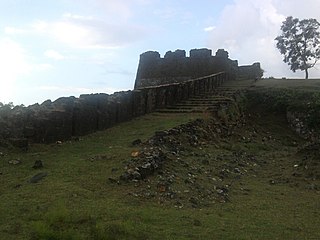 W
WThe Siege of Bednore was a battle of the Second Anglo-Mysore War. The British had captured Bednore and other strongholds in the Malabar coast from Mysore in early 1783, while the Mysore leader, Tipu Sultan, was leading his army on campaign in the Carnatic. The British commander, Brigadier-General Richard Matthews, formed a small garrison of 1,600 men at Bednore and split the remainder of the force into detachments to plunder the surrounding region. Tipu Sultan brought his army of more than 100,000 men west and managed to approach within 6 kilometres (4 mi) of Bednore undetected by 9 April. Matthews deployed his troops in the field outside of Bednore and was swiftly defeated. Matthews abandoned the town and retreated to the fort which was quickly besieged by the Mysore army.
 W
WThe siege of Charleston was a major engagement and major British victory, fought between March 29 to May 12, 1780, during the American Revolutionary War. The British, following the collapse of their northern strategy in late 1777 and their withdrawal from Philadelphia in 1778, shifted their focus to the American Southern Colonies.
 W
WThe siege of Cuddalore was a siege attempt by British troops against a combined French and Mysorean garrison at the fortress of Cuddalore in the Second Anglo-Mysore War. The siege ended when news arrived of a preliminary peace treaty between France and Britain.
 W
WThe Great Siege of Gibraltar was an unsuccessful attempt by Spain and France to capture Gibraltar from the British during the War of the American Revolution. The American war had ended with the British defeat at Yorktown in October 1781, but the Bourbon defeat in their great final assault on Gibraltar would not come until September 1782. The siege was suspended in February 1783 at the beginning of peace talks with the British.
 W
WThe siege of Pondicherry was the first military action on the Indian subcontinent following the declaration of war between Great Britain and France in the American Revolutionary War. A British force besieged the French-controlled port of Pondicherry in August 1778, which capitulated after ten weeks of siege.
 W
WThe siege of Savannah or the Second Battle of Savannah was an encounter of the American Revolutionary War (1775–1783) in 1779. The year before, the city of Savannah, Georgia, had been captured by a British expeditionary corps under Lieutenant-Colonel Archibald Campbell. The siege itself consisted of a joint Franco-American attempt to retake Savannah, from September 16 to October 18, 1779. On October 9 a major assault against the British siege works failed. During the attack, Polish nobleman Count Casimir Pulaski, leading the combined cavalry forces on the American side, was mortally wounded. With the failure of the joint attack, the siege was abandoned, and the British remained in control of Savannah until July 1782, near the end of the war.
 W
WThe siege of Yorktown, also known as the Battle of Yorktown, the surrender at Yorktown, or the German battle, ending on October 19, 1781, at Yorktown, Virginia, was a decisive victory by a combined force of the American Continental Army troops led by General George Washington and Gilbert du Motier, Marquis de Lafayette, and French Army troops led by Comte de Rochambeau over a British army commanded by British peer and Lieutenant General Charles Cornwallis. The culmination of the Yorktown Campaign, the siege proved to be the last major land battle of the American Revolutionary War in the North American region, as the surrender by Cornwallis, and the capture of both him and his army, prompted the British government to negotiate an end to the conflict.